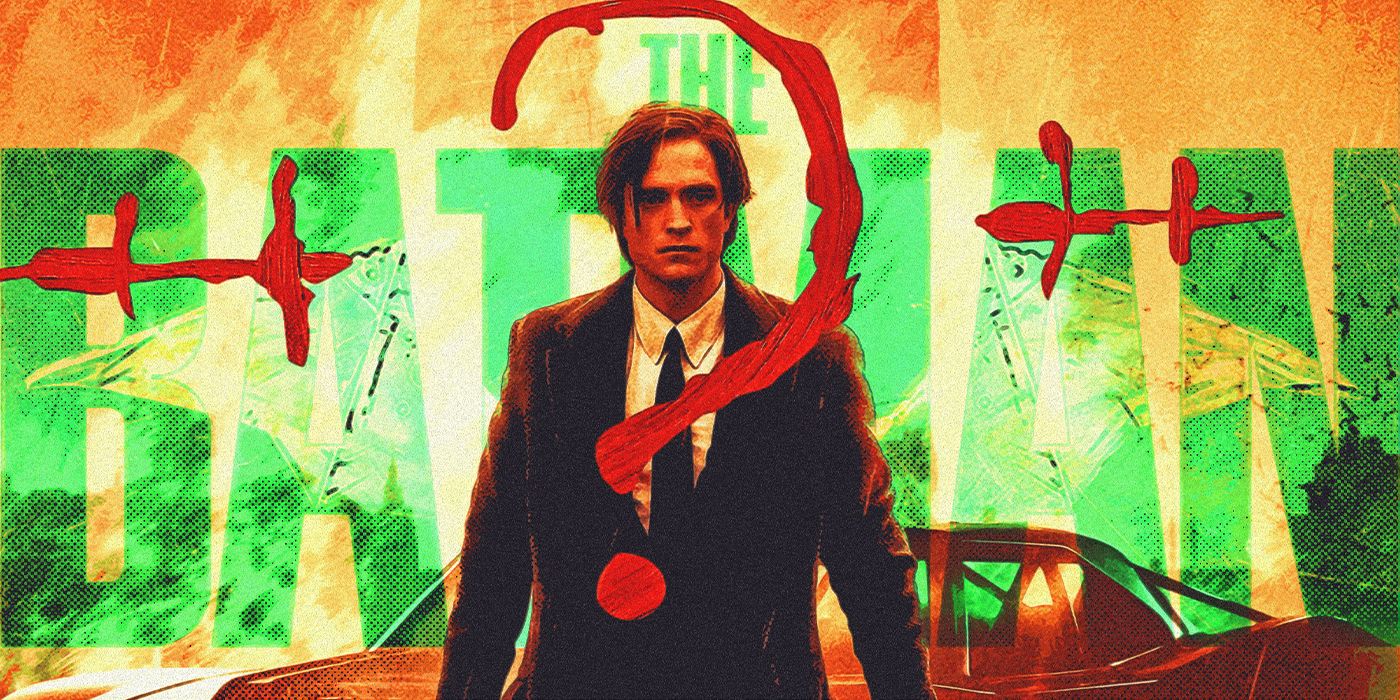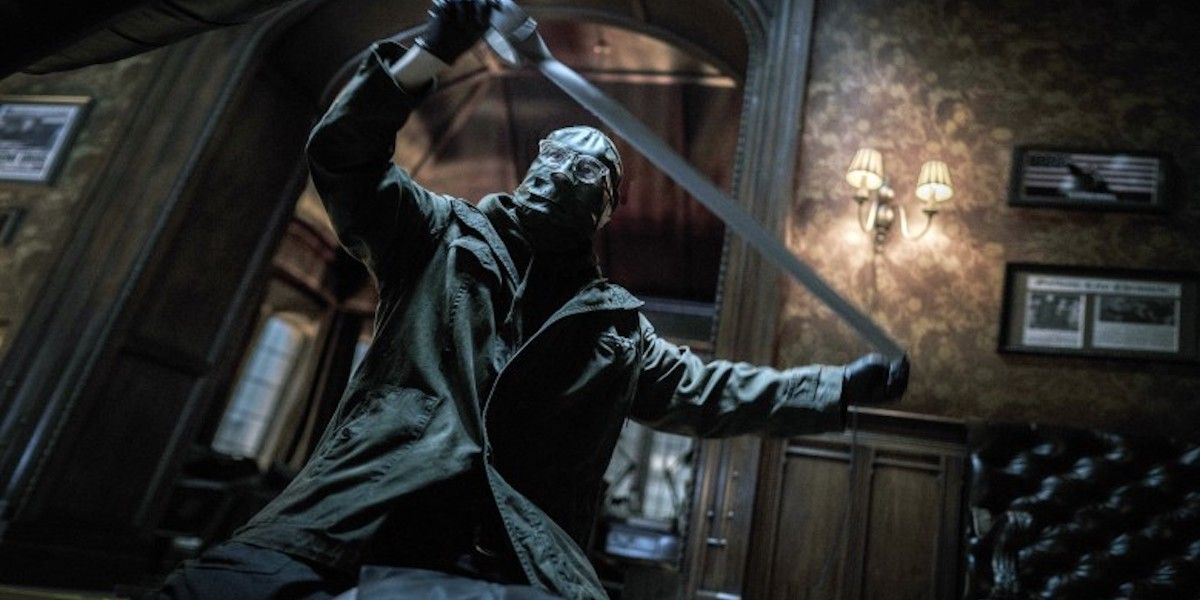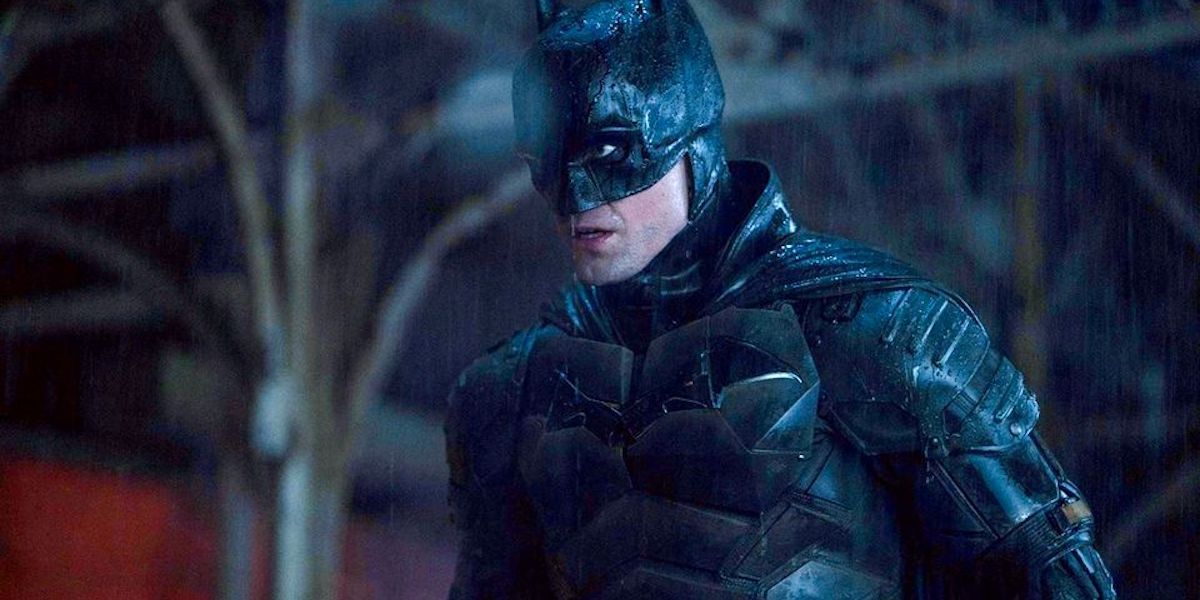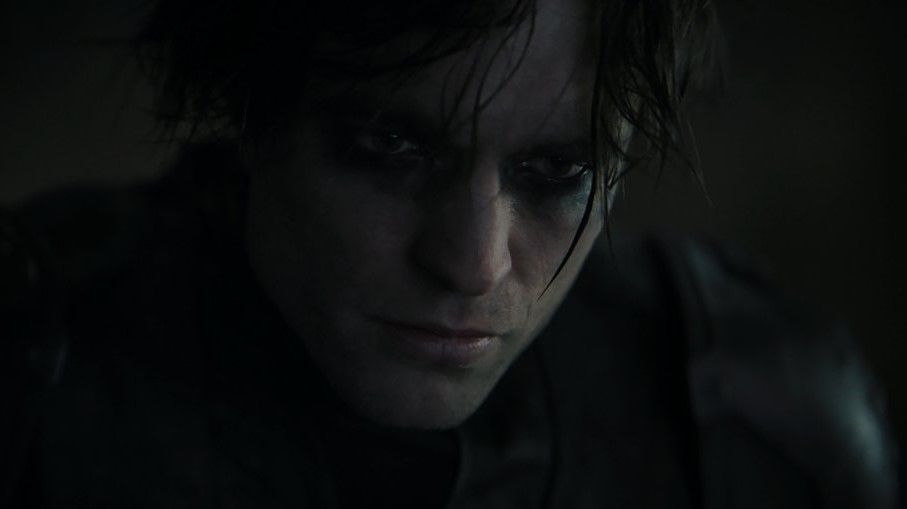Matt Reeves' The Batman has received generally favorable reviews, since its March 4 theatrical release and subsequent release on HBO Max, which is a positive and surprising result after DC's run of ridiculed and unsuccessful films — by audiences and critics alike — in recent years. Of course, there were those who were unenthused with The Batman and various points of its plot and characterization, but overall, the film was a great first attempt and a novel take on the Batman character. It seems the film's conclusion aims to set up a series, which means there's only room for growth and improvement to make something really special. Having said that, the opening of Reeves's epic creation has to be one of the best in Batman's history, if not movie history. The establishing sequence, and all of its subsequent elements — cinematography, soundtrack, sound design, dialogue, combat, setting — all culminate to make a truly stunning piece of film.
The Batman does not open with the caped crusader crouched like a gargoyle or swooping grandly around the city. There is no swelling strings or large orchestra hitting us in the face. Instead, Reeves take a more intimate and subtle approach: we, the audience, have a "bat's eye view," staring through the cowl, hearing the heavy breathing, becoming the voyeur, as we stare into the window of the film's first victim, which, subsequently, leads to a clever reveal that the cowl was not Batman's at all, but, in fact, The Riddler's (Paul Dano).
The faint classical music and the traditional Gothic architecture create a subtle sense of dread, really creating an atmosphere of old-school horror. The dim lighting and atmosphere of the house makes us paranoid, assessing the shadows, only to see a terrifying figure there. The sense of inevitable dread climaxes into a struggle and a brutal murder, each thud and breath executed to perfection.
Next, we move onto Batman, Robert Pattinson providing quiet and broody narration: it not only provides exposition, but a sense of this new Batman. This Batman that has not perfected the responsibilities of his double-life; he does not possess the suave, smooth charisma of Bruce Wayne. He is so preoccupied with his vigilante persona and his quest for vengeance, that all humanity seems to have left him. We see a depressed husk of a person, describing two years of fighting crime, only for it to continue and worsen.
This is when the sound, music, and setting come into play: the battering rain providing the perfect gloomy backdrop and background noise for the eventual reveal of the Batman. The dark and dingy subways, covered in grime and graffiti, scream their way through the city, and carrying an innocent victim with a sinister goon squad. A fight breaks out amongst the goons and the helpless citizen, their rapid movements swishing beautifully in the rain. We hear an echoing clatter in the darkness, we feel the fear of the goons and victim alike, staring into the abyss of the alley way. Michael Giacchino's score is absolutely stunning; it is foreboding, dramatic, and the choice to make the striking of a church bell Batman's motif is a stroke of genius. This simple sound comes to place Batman as a force of judgment but, also, that of doom — the phrase "for whom the bell tolls" very much comes to mind.
Reeves has almost set us up for a cheap jump scare with the sheer amount of terror and tension he creates, but, instead, continues to draw out the fear, as Batman (suited and booted in his gorgeous plated apparel) slowly strides out of the darkness. Again, props to those behind the sound design and visual effects, the echoing thud of his boots splashing in the torrential rain is audibly and visually stunning. The fight escalates, the combat being sleek but not so sleek that it defies reality or alleviates the brutality of it. Finally, Batman is asked the classic, awaited question: "Who are you?" Reeves has us ready to cringe and roll our eyes as we expect yet another Batman to tell us "[he's] Batman." However, it is so pleasantly surprising and refreshing to hear Pattinson reply: "I'm vengeance." It's a perfect response for this particular Batman: one that is so clouded with grief and anger that his career as a vigilante is less about justice and more about his own personal revenge. The criminals of Gotham took what he valued most, and he's understandably ready to rampage about it.
After the fight, we return to a voiceover from Pattinson. We see a scrawling journal, Pattinson wearing dark, Gothic eye make-up, and the beautiful Nirvana classic "Something in the Way." Reeves took inspiration from Kurt Cobain for his interpretation of the Batman, which can be seen in these more personal moments. Batman is a hero that we rarely get inside the head of: he is often thought of as emotionally impenetrable, never wrong, always put together, and slips seamlessly into the persona of a playboy billionaire — but not this one.
Cobain was famous for keeping journals, and was very much a figure that was tortured by his career, and suffered heavily from depression: all of which apply to Pattinson's Batman. It's made very clear that Batman is on a form of autopilot, not really getting any fulfillment or closure from beating up the bad guys, as it does nothing to fill his void of depression and grief. In hindsight, all of these factors of the character make his arc and his outlook by the final scenes of the film so much more powerful.
He is no longer a vendetta-driven man that wants to strike fear, he becomes more of a protector that wants to inspire reassurance. He wants to be Batman for those who are good, and not just the bad guys. Overall, none of this would have any kind of resonance (and would be dangerously close to the final lines of Christopher Nolan's The Dark Knight), if these key moments of the film's opening didn't exist. Whether you enjoyed The Batman as a whole or not, the strength of its opening is undeniable. It's a masterclass in camera work, sound design, music, dialogue, and a new kind of characterization, which is impressive when the character has existed for over 80 years!
So, here's hoping, if there are, indeed, other installments - that this piece of cinema is only the beginning of remarkable things to come.




